Search
Did you mean: The Dagda?
Search Results
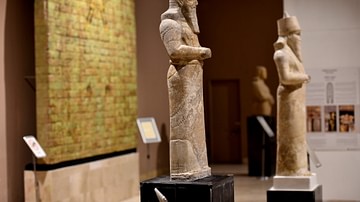
Image
Two Statues of Shalmaneser III at the Iraq Museum
In the centre of this image is the so-called Kurba'il statue of Shalmaneser III (reigned 858-824 BCE), which was found in Fort Shalmaneser in 1961 CE by the British School of Archaeology in Iraq. The statue originally stood in the Temple...
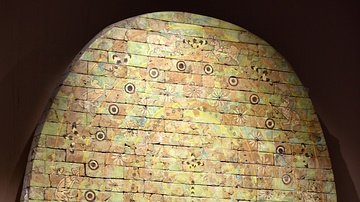
Image
Glazed Wall Panel from Fort Shalmaneser
This large wall panel of vibrant glazed bricks was once placed above the entrance to a vast room (T3) next to Shalmaneser III's throne room at Fort Shalmaneser in Nimrud (in modern-day Nineveh Governorate, Iraq). The whole panel is composed...
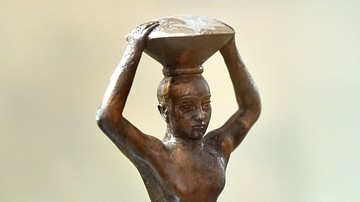
Image
Foundation Figurine of Ur-Nammu
This bronze statuette was found at the foundation deposits of the temple of Eanna at Nippur. The statue depicts Ur-Nammu, king of Ur, holding a basket on his head as the builder of the temple. Ur III (Neo-Sumerian) period, reign of Ur-Nammu...
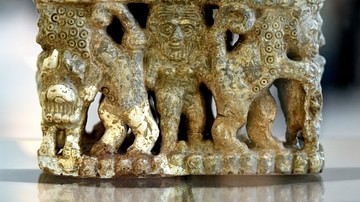
Image
Gilgamesh Wrestling Two Bulls
This stone piece is carved with a scene depicting Gilgamesh wrestling two bulls. From the great temple at Tell Agrab, Diyala Valley, Iraq. Early Dynastic period, 2600-2370 BCE. On display at the Iraq Museum in Baghdad, Republic of Iraq.

Image
Headless Statue of Hercules from Hatra
The Latin inscription at the base of the statue dates it back to 238-241 CE. This statue was erected by the Roman legion defending the city of Hatra against the Sassanian invasion. Hercules holds a cup in his left hand and a lion's skin...
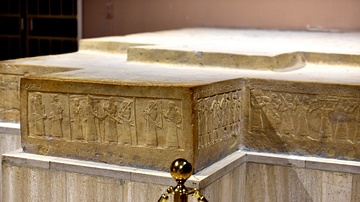
Image
Throne Dais of Shlamaneser III at the Iraq Museum
This dais was found in the eastern end of the throne room (T1) at Fort Shalmaneser in the city of Nimrud (in modern-day Nineveh Governorate, Iraq) in 1962 CE. The upper surface is decorated with geometrical floral motifs and inscribed with...
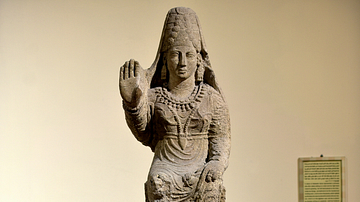
Image
Statue of Abu Bint Jablo, Hatra
The Aramaic inscription on the base of the statute states that it was commissioned by Abu Bint Jablo's husband in her memory and that she was assassinated for an unknown reason under vague circumstances at the age of 18. The inscription also...
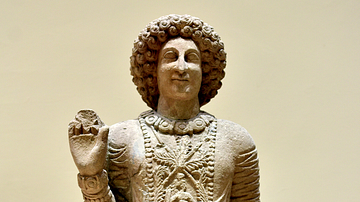
Image
Statue of Prince Absadmiya from Hatra
A statue of Absadmiya, the son of king Sanatruq I of Hatra (reigned c. 140 - 180 CE). His right arm is raised in salutation while the left hand holds a palm branch. He wears an elegant and exquisitely carved dress. The feet are lost. The...
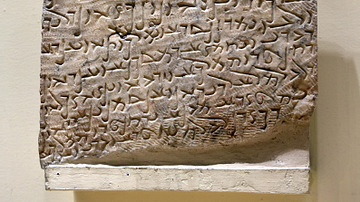
Image
Aramaic Inscription from Hatra
This marble slab was inscribed with an Aramaic script mentioning the name of "Hatra" as the center of the region "Araba". From the 11th temple at Hatra, Ninawa Governorate, Iraq. Parthian period, 1st to 3rd century CE. On display at the Iraq...
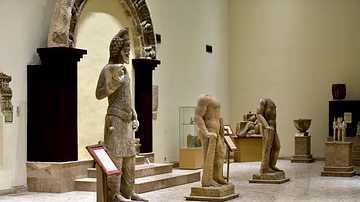
Image
Hatra Gallery of the Iraq Museum
This is one of the Hatra Galleries where several statues and artifacts from Hatra are displayed. The Iraq Museum, Baghdad.